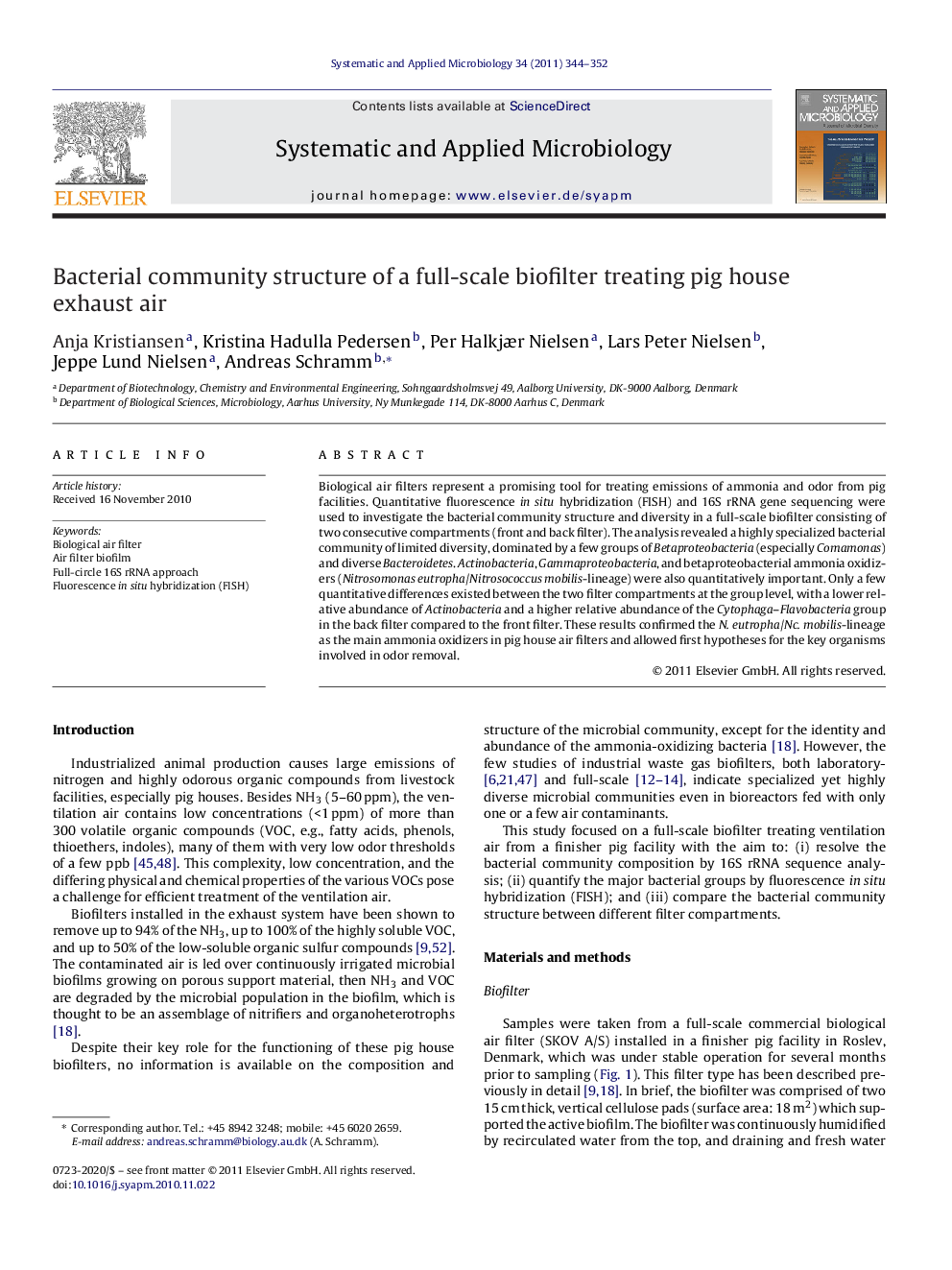| Article ID | Journal | Published Year | Pages | File Type |
|---|---|---|---|---|
| 2063868 | Systematic and Applied Microbiology | 2011 | 9 Pages |
Biological air filters represent a promising tool for treating emissions of ammonia and odor from pig facilities. Quantitative fluorescence in situ hybridization (FISH) and 16S rRNA gene sequencing were used to investigate the bacterial community structure and diversity in a full-scale biofilter consisting of two consecutive compartments (front and back filter). The analysis revealed a highly specialized bacterial community of limited diversity, dominated by a few groups of Betaproteobacteria (especially Comamonas) and diverse Bacteroidetes. Actinobacteria, Gammaproteobacteria, and betaproteobacterial ammonia oxidizers (Nitrosomonas eutropha/Nitrosococcus mobilis-lineage) were also quantitatively important. Only a few quantitative differences existed between the two filter compartments at the group level, with a lower relative abundance of Actinobacteria and a higher relative abundance of the Cytophaga–Flavobacteria group in the back filter compared to the front filter. These results confirmed the N. eutropha/Nc. mobilis-lineage as the main ammonia oxidizers in pig house air filters and allowed first hypotheses for the key organisms involved in odor removal.
